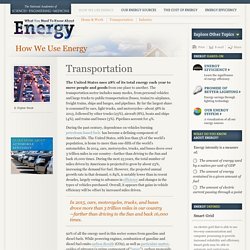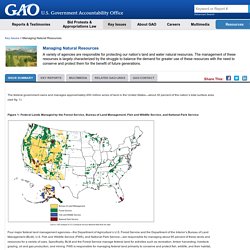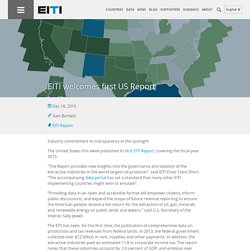

12.15.16 BIA retaliated +whistleblower on irregularities in oil and gas leases. SEC Conflict Minerals Rule: Companies Face Continuing Challenges in Determining Whether Their Conflict Minerals Benefit Armed Groups. FACT: Proposed 2017 Nationwide Permits. How We Use Energy, Transportation — The National Academies. Transportation The United States uses 28% of its total energy each year to move people and goods from one place to another.

The transportation sector includes many modes, from personal vehicles and large trucks to public transportation (buses, trains) to airplanes, freight trains, ships and barges, and pipelines. By far the largest share is consumed by cars, light trucks, and motorcycles—about 58% in 2013, followed by other trucks (23%), aircraft (8%), boats and ships (4%), and trains and buses (3%).
Pipelines account for 4%. During the past century, dependence on vehicles burning petroleum-based fuels has become a defining component of American life. In 2015, cars, motorcycles, trucks, and buses drove more than 3 trillion miles in our country—farther than driving to the Sun and back 16,000 times. 92% of all the energy used in this sector comes from gasoline and diesel fuels.
Efforts are well under way to find alternatives to oil. A Year Later, Unfiltered Flint Tap Water Is Still Unsafe To Drink. Unconventional Oil and Gas Development: Key Environmental and Public Health Requirements. Gov. Accountability Office: Managing Natural Resources. The federal government owns and manages approximately 650 million acres of land in the United States—about 30 percent of the nation’s total surface area (see fig. 1).

Figure 1: Federal Lands Managed by the Forest Service, Bureau of Land Management, Fish and Wildlife Service, and National Park Service Four major federal land management agencies—the Department of Agriculture’s U.S. Forest Service and the Department of the Interior’s Bureau of Land Management (BLM), U.S. Extractive Industries Transparency Initiative 12.18.15. The United States this week published its first EITI Report, covering the fiscal year 2013.

“The Report provides new insights into the governance and taxation of the extractive industries in the world largest oil producer”, said EITI Chair Clare Short. “The accompanying data portal has set a standard that many other EITI implementing countries might wish to emulate”. “Providing data in an open and accessible format will empower citizens, inform public discussions, and expand the scope of future revenue reporting to ensure the American people receive a fair return for the extraction of oil, gas, minerals and renewable energy on public lands and waters,” said U.S. Secretary of the Interior Sally Jewell. North Dakota, this is a problem. "F" grade for transparency? The Energy Story - Introduction. Energy is one of the most fundamental parts of our universe.

We use energy to do work. World's Biggest PR Firm Quits American Oil Lobby. Perhaps you heard the good news—the world’s largest public relations firm, Edelman, just spun off an advertising subsidiary so that it could show a commitment to not aiding the denial of climate change science.

The Guardian explains how American Petroleum Institute’s (API) contracts with Edelman were so massive—tens of millions of dollars—that it was up to 10 percent of the PR giant’s income. For years, Edelman has managed multi-million dollar contracts with the API, using its Blue Advertising subsidiary to help API run commercials selling fantasies to people: that oil and gas are our only viable, plentiful, “AMERICAN” sources of energy. In the saga that led Edelman to dump the lobbyists at API, Greenpeace had a small role to play: we infiltrated a commercial shoot, run by Edelman’s Blue advertising arm for API.
After being dressed up in a button-down, plaid orange shirt—I’m not sure what look they had in mind for me—I was put in front of the camera and told to repeat lines back. Exxon CEO Joins Lawsuit to Stop Fracking Near His Home.
ENERGY: GOVERNMENT PLAYERS. ENERGY: CORPORATE PLAYERS. ENERGY: ORGANIZATIONS. ENERGY: ENVIRONMENT. ENERGY: INCIDENTS & CONSEQUENCES. ENERGY: LEGISLATION & LAWS, TRIBAL INTERESTS. ENERGY: SAFETY, HEALTH & REGULATION. ENERGY: THE LEGAL BATTLES. ENERGY: SECURITY & SURVEILLANCE. ENERGY: MEDIA & INDUSTRY. ENERGY: EVENTS & MEETINGS. INTRODUCTION: THE PIPELINES. INTRODUCTION: THE RAIL LINES. ENERGY: FOSSIL FUELS. ENERGY: CLEAN. RECOVERED ENERGY. NUCLEAR POWER. Have We Reached The Tipping Point For A Resource Revolution?
Lately we’re seeing a wave of seriously scary forecasts.

Predictions of billions of dollars in coastal assets at risk, dwindling supplies of important minerals, and diminishing fresh water supplies are sparking movements to focus the world’s attention. As rising voices call for change from “business as usual”, solving these dilemmas will require tackling them as resource management problems. Have global awareness, rapidly advancing digital technology, and creative business designs brought us to the tipping point for a revolution? I don’t mean the people in the streets variety (though that may be starting), but instead what Stefan Heck and Matt Rogers call a Resource Revolution. Their central tenet is that businesses which deliver the most dramatic resource-productive improvements will become the great companies of the 21st century, reap trillions of dollars in profits, create jobs and improve lives. What’s needed for this to happen? Do we have the right skills? Measure, measure, measure. Annual Energy Outlook 2016 (PowerPoint)
ENERGY: MARKETS.